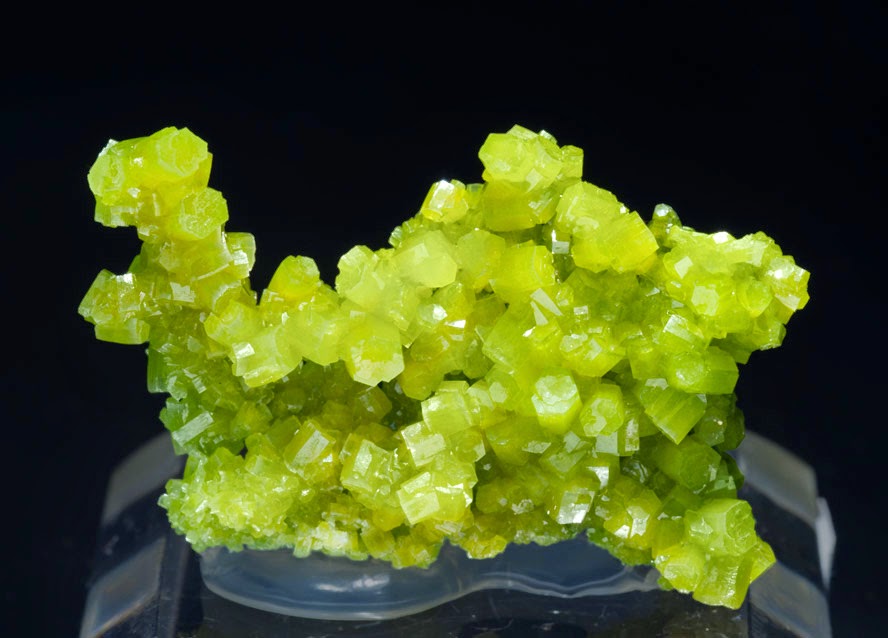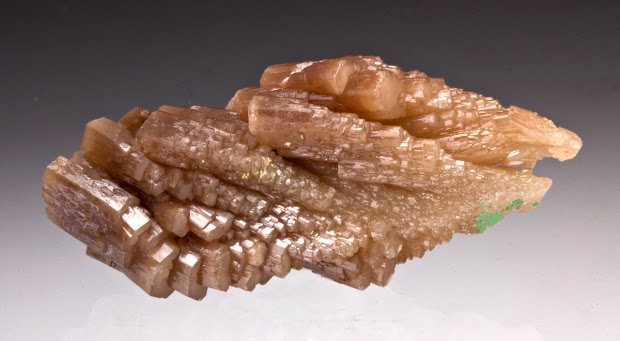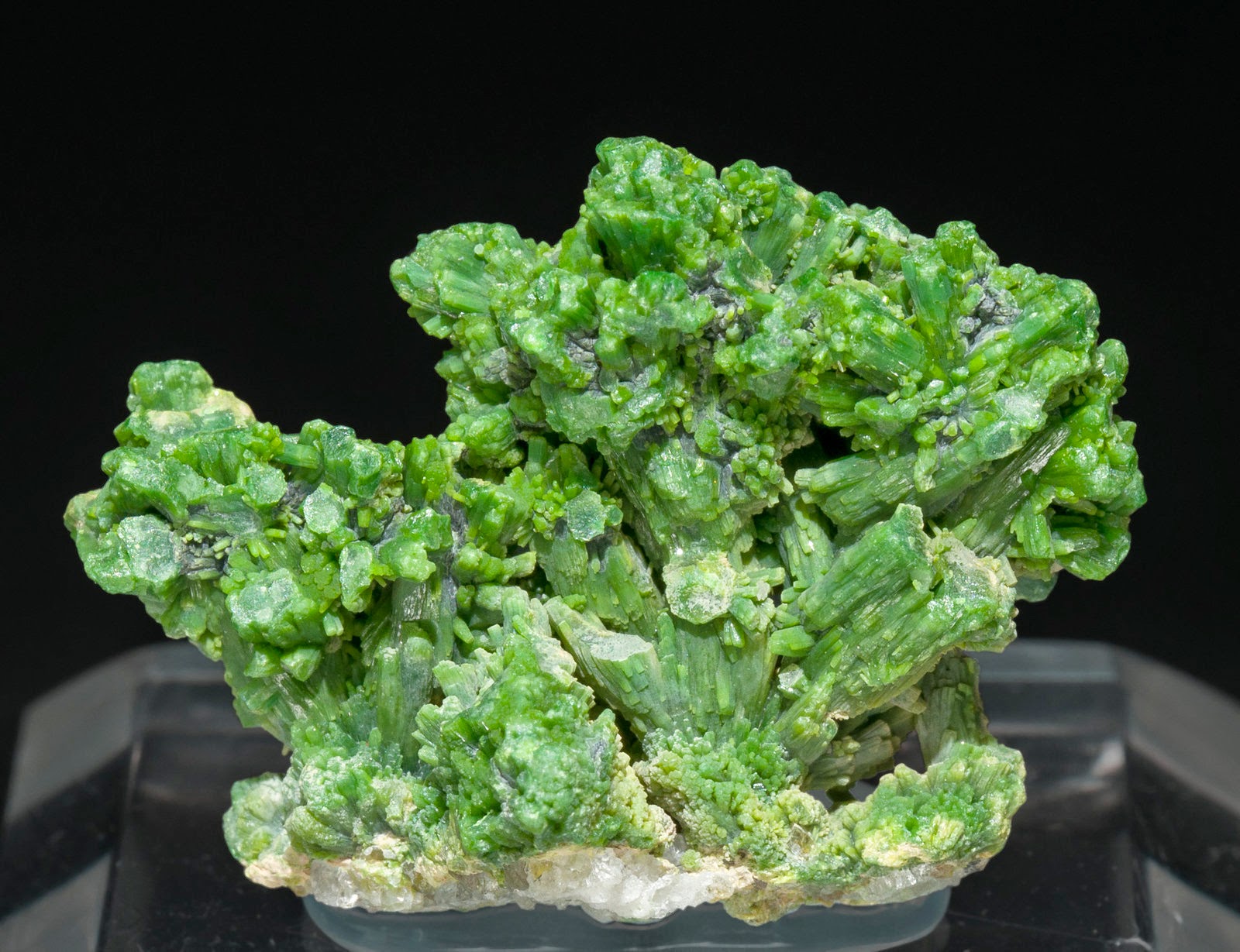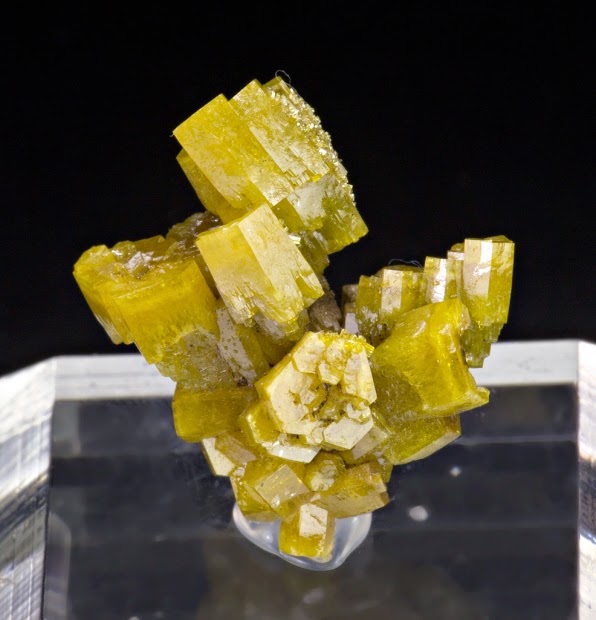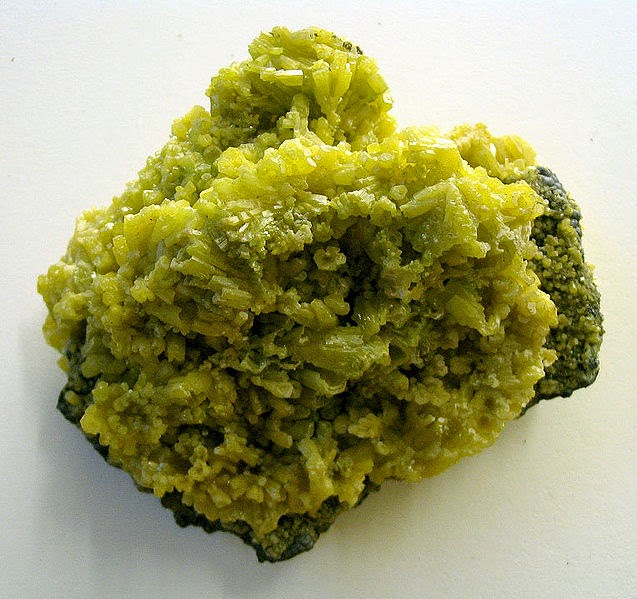
Chemical Formula: Pb5(PO4)3Cl
Name Origin: From the Greek pyr – “fire” and morfe – “form” in allusion the recrystallization reaction of the molten mineral.
Pyromorphite is a mineral species composed of lead chlorophosphate: Pb5(PO4)3Cl, sometimes occurring in sufficient abundance to be mined as an ore of lead. Crystals are common, and have the form of a hexagonal prism terminated by the basal planes, sometimes combined with narrow faces of a hexagonal pyramid. Crystals with a barrel-like curvature are not uncommon. Globular and reniform masses are also found. It is part of a series with two other minerals: mimetite (Pb5(AsO4)3Cl) and vanadinite (Pb5(VO4)3Cl), the resemblance in external characters is so close that, as a rule, it is only possible to distinguish between them by chemical tests.
They were formerly confused under the names green lead ore and brown lead ore (German: Grünbleierz and Braunbleierz). The phosphate was first distinguished chemically by M. H. Klaproth in 1784, and it was named pyromorphite by J. F. L. Hausmann in 1813. The name is derived from the Greek for pyr (fire) and morfe (form) due to its crystallization behavior after being melted.
History
Authors : HAUSMANN
Discovery date : 1813
Optical properties
Optical and misc. Properties : Transparent – Translucide – Fragile, cassant – Luminescent, fluorescent
Refractive Index : from 2,04 to 2,05
Physical properties
Hardness: from 3,50 to 4,00
Density : 7,04
Color : green; yellow; orange; brown; grey; colorless; white; red yellow; yellowish brown; purplish brown
Luster: sub-adamantine; resinous; greasy
Streak : white; grey; yellowish
Break: irregular; sub-conchoidal
Cleavage: yes
Photos:
